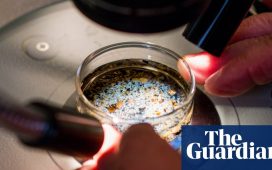Scientists have made a remarkable discovery about the planet Mars that suggests it once had the perfect conditions for life to thrive.
Experts and entrepreneurs in the field of Space exploration, like the world’s richest man Elon Musk, see the planet as the most likely candidate for a second settlement of humans in our solar system, owing to its – relative – closeness, and comparability to conditions on Earth compared to others.
However, temperatures on the Red Planet are way below freezing, with an atmosphere of more than 95% carbon dioxide and far below 1% oxygen, making it difficult to see how humans and other life could survive there currently.
However, scientists believe that data collected by China’s Zhurong Mars rover shows what appears to be a former seabed in a major breakthrough. This may show that the planet may once have had an ocean and beaches comparable to those of Earth for millions of years.
Researchers believe nearly half the planet was thought to have been covered in an ocean called “The Gulf of Mars”, some four billion years ago.
Radar images captured by the Chinese rover found evidence of a series of subterranean ridges indicating that a long-since dried up ocean once had a sandy shore, as per The Times.
Scientists believe the ridges are evidence that the planet was once home to beaches formed by tidal deposits.
The discovery was reported in the journal Proceedings of the National Academy of Science, with one of its co-authors, Professor Benjamin Cardenas of Pennsylvania State University, suggesting Mars may once have been better described as a blue planet.
“We found evidence for wind, waves, no shortage of sand — a proper, vacation-style beach,” he said.
Michael Manga, a planetary scientist at the University of California, Berkeley, and also a co-author on the study said the team of researchers that scrutinised the data had considered other explanations and felt there was only one answer.
“Sand dunes have multiple directions. Same with lava flows,” he said, as reported by Australia’s ABC News.
The ridges are about 10 metres under the current surface, and their thickness suggests they would have taken millions of years to form, as per ABC.
Professor Manga also appeared to rule out the possibility it could have been caused by an asteroid striking the planet, as there is “no evidence for an impact crater to have made these sloping surfaces”.
The discovery has opened up the exciting possibility that the planet could have been a warm and wet planet for tens of millions of years with an environment well suited to supporting life, as per The Telegraph.
The Zhurong rover landed on the planet’s Utopia Planitia region in 2021 and spent almost a year exploring before going into hibernation for the Martian winter in May 2022, as per ABC.
Sadly, it never woke up from its slumber, like due to an accumulation of dust which blocked its solar panels from absorbing suffient energy.
However, the data it captured and returned to Earth may prove to have huge implications for our understanding of the planet, and the search for evidence of life beyond Earth.










